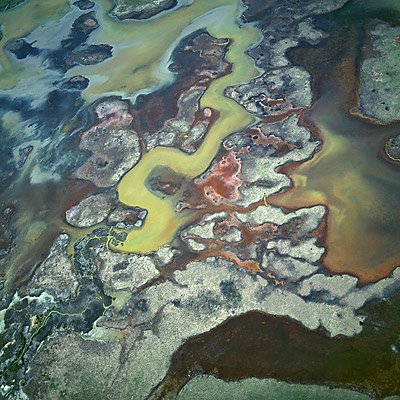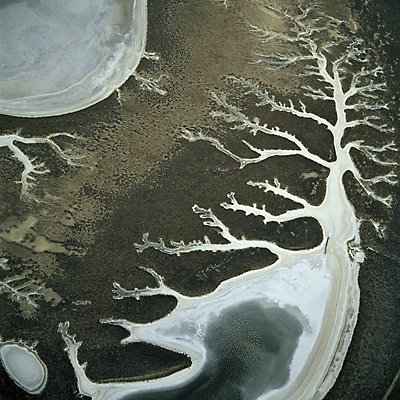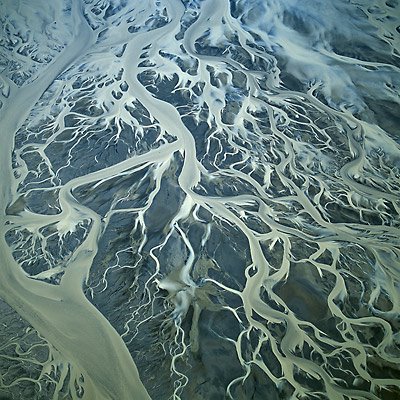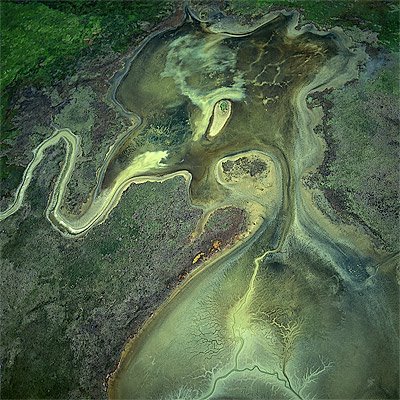The surface of the planet renews itself through geothermal hydrology, sulfuric lakes, new continents of silt –



– as natural acids scour shapes in slow terrains.
These are all photographs by Bernhard Edmaier, whose work can be found on his own website –


– and in the beautiful (if unfortunately named) Earthsong.
Meanwhile – though I repeat myself – these bring to mind J.G. Ballard’s novel The Drowned World, with its vision of a flooded, neo-tropical Europe, London become a backed-up toilet full of silt and Jurassic vegetation, “a nightmare world of competing organic forms returning rapidly to their Paleozoic past.”
Huge iguanas laze around in the heat. Buildings left and right are collapsing, their lower six floors immersed in polluted seawater, “miasmic vegetation… crowding from rooftop to rooftop.”
The city is fossilizing.
As Ballard writes: “A few fortified cities defied the rising water-levels and the encroaching jungles, building elaborate sea-walls around their perimeters, but one by one these were breached. Only within the former Arctic and Antarctic Circles was life tolerable.”
So the story goes that a research biologist is touring this neo-tropical London, boating from hotel to hotel across fetid lagoons, recording the types of plants that infest the city. Meanwhile monsoons are coming up from the south, everyone is dying of skin cancer and no one can sleep. The intensity of the sun’s radiation is making everything mutate.
In between some eyebrow-raising moments of ridiculous, pop-Nietzschean pseudo-philosophy – the surviving humans find themselves psychologically regressing down the totem pole of evolution toward… something or other; it’s all very psychedelic and 2001 – there are some cool descriptions of these new urban tropics:
“Giant groves of gymnosperms stretched in dense clumps along the rooftops of the submerged buildings, smothering the white rectangular outlines… Narrow creeks, the canopies overhead turning them into green-lit tunnels, wound away from the larger lagoons, eventually joining the six hundred-yard-wide channels which broadened outwards toward the former suburbs of the city. Everywhere the silt encroached, shoring itself in huge banks against a railway viaduct or crescent of offices, oozing through a submerged arcade… Many of the smaller lakes were now filled in by the silt, yellow discs of fungus-covered sludge from which a profuse tangle of competing plant forms emerged, walled gardens in an insane Eden.”
In any case, one could easily imagine Bernhard Edmaier’s photographs here bearing much in common with Ballard’s new alluvial world of fresh earth, architecture reduced to deltas of sand. Old eroded reefs of brickwork. Lagoons of pollution.

Erosion and hydrology, the most powerful urban forces on earth.